Jacqueline Winspear is a noteworthy author best known for her compelling historical mysteries, especially the Maisie Dobbs series. Born and raised in Kent, England, her novels uniquely blend meticulous historical details, personal experiences, and an evocative depiction of post-WWI Britain.
For readers new to Winspear’s world or those looking to read her works chronologically, we’ve prepared a handy list. Dive into the mesmerizing world of Winspear crafts, book by book.
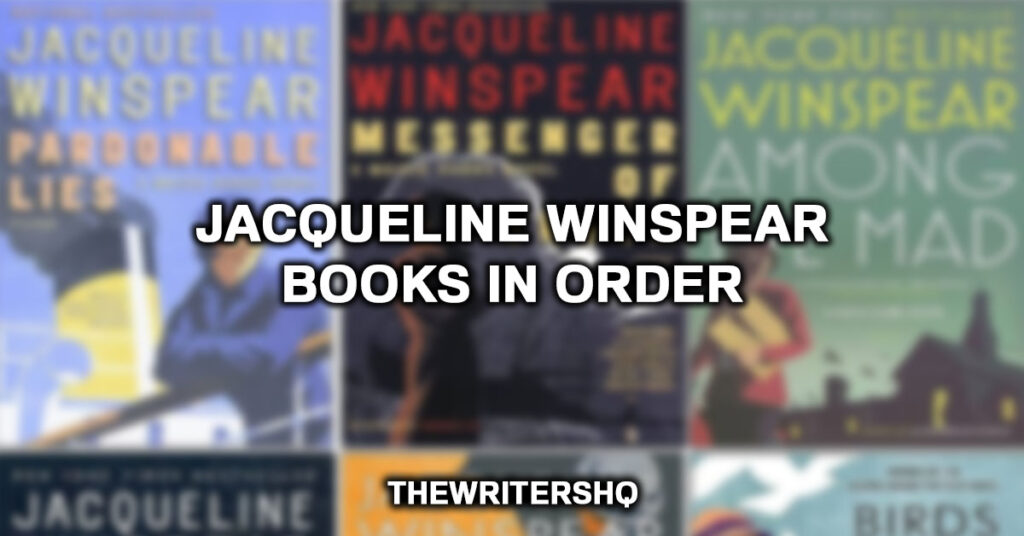
Jacqueline Winspear Books in Order:
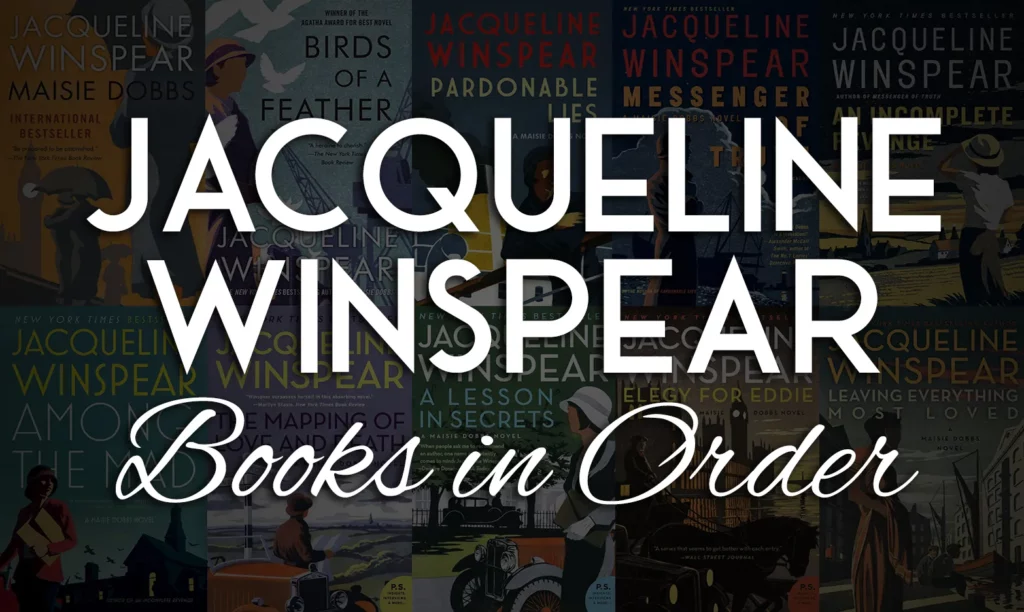
- Maisie Dobbs (2003)
- Birds of a Feather (2004)
- Pardonable Lies (2005)
- Messenger of Truth (2006)
- An Incomplete Revenge (2008)
- Among the Mad (2009)
- The Mapping of Love and Death (2010)
- A Lesson in Secrets (2011)
- Elegy for Eddie (2012)
- Leaving Everything Most Loved (2013)
- A Dangerous Place (2015)
- Journey to Munich (2016)
- In This Grave Hour (2017)
- To Die but Once (2018)
- The American Agent (2019)
- The Consequences of Fear (2021)
For readers delving into Winspear’s work, this list will help navigate her literary contributions chronologically. Happy reading!
Is the Maisie Dobbs series over?
Jacqueline Winspear has not announced that the Maisie Dobbs series is officially over. Authors often continue popular series based on a variety of factors, including reader demand, personal inspiration, and publishing arrangements.
Expert Tip: It’s best to check the author’s official website or publisher announcements for the most recent information regarding the continuation of the series.
What is the order of books in the Maisie Dobbs series?
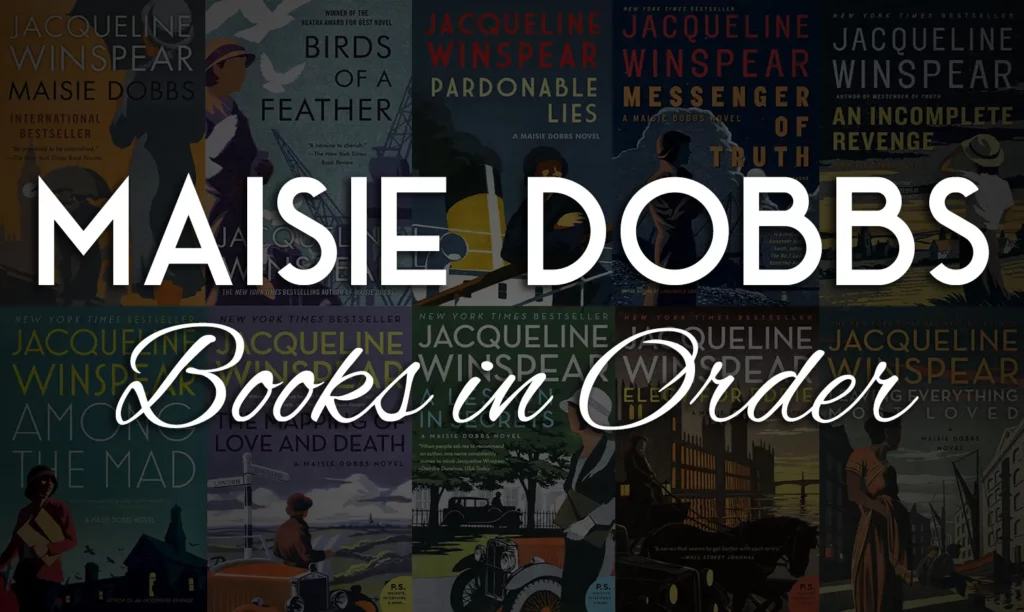
Here’s the chronological order of the Maisie Dobbs series:
- Maisie Dobbs (2003)
- Birds of a Feather (2004)
- Pardonable Lies (2005)
- Messenger of Truth (2006)
- An Incomplete Revenge (2008)
- Among the Mad (2009)
- The Mapping of Love and Death (2010)
- A Lesson in Secrets (2011)
- Elegy for Eddie (2012)
- Leaving Everything Most Loved (2013)
- A Dangerous Place (2015)
- Journey to Munich (2016)
- In This Grave Hour (2017)
- To Die but Once (2018)
- The American Agent (2019)
- The Consequences of Fear (2021)
Do I have to read Maisie Dobbs in order?
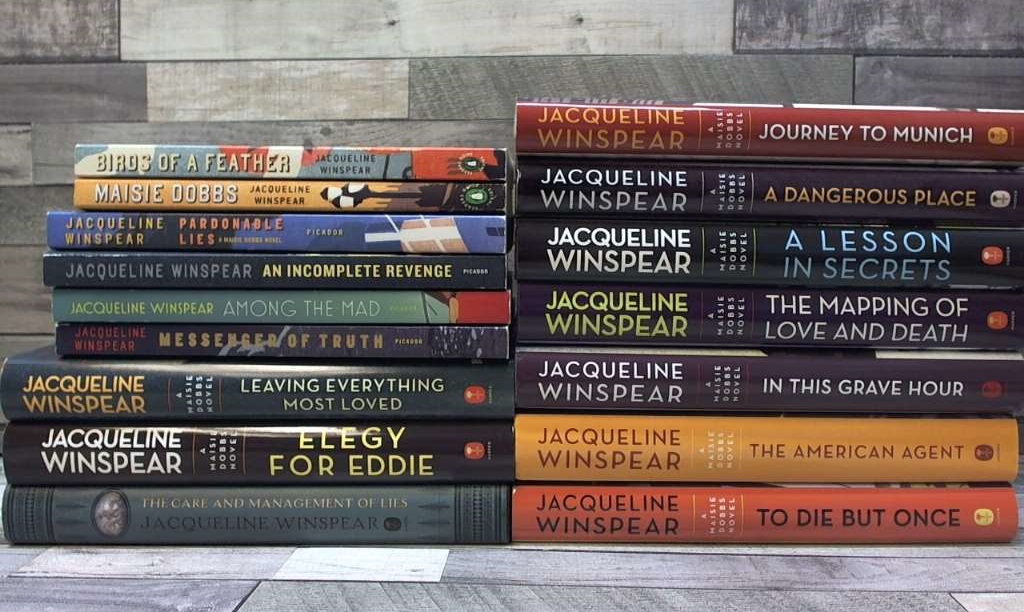
While each book in the Maisie Dobbs series typically presents a standalone mystery that gets resolved, there are overarching plotlines, character developments, and historical contexts that progress through the series.
Reading the books in order allows readers to appreciate the evolution of Maisie’s character, her relationships, and her personal journey against the backdrop of significant historical events.
For example, the series begins with Maisie establishing her detective agency in post-WWI London, and as the series progresses, she and those around her grapple with the societal changes, personal traumas, and the looming and eventual reality of WWII.
If you skip around or read the books out of order, you might miss out on some of the nuances of Maisie’s personal story and the larger historical context.
That said, if you happen upon a later book in the series and read it first, it won’t spoil the enjoyment of the mystery itself. But for a comprehensive understanding and appreciation of the series, it’s recommended to read them in order.
How many books has Jacqueline Winspear written?
As of my last update in September 2021, Jacqueline Winspear has primarily been recognized for her Maisie Dobbs series, which consists of 16 books. Additionally, she has written a standalone novel titled “The Care and Management of Lies,” as well as contributions to some other compilations. This brings the total count to 17 primary works.
However, she may have written more since then, and for the most up-to-date count, I recommend checking her official website or publisher announcements.
In what order should I read the GOT (Game of Thrones) books?
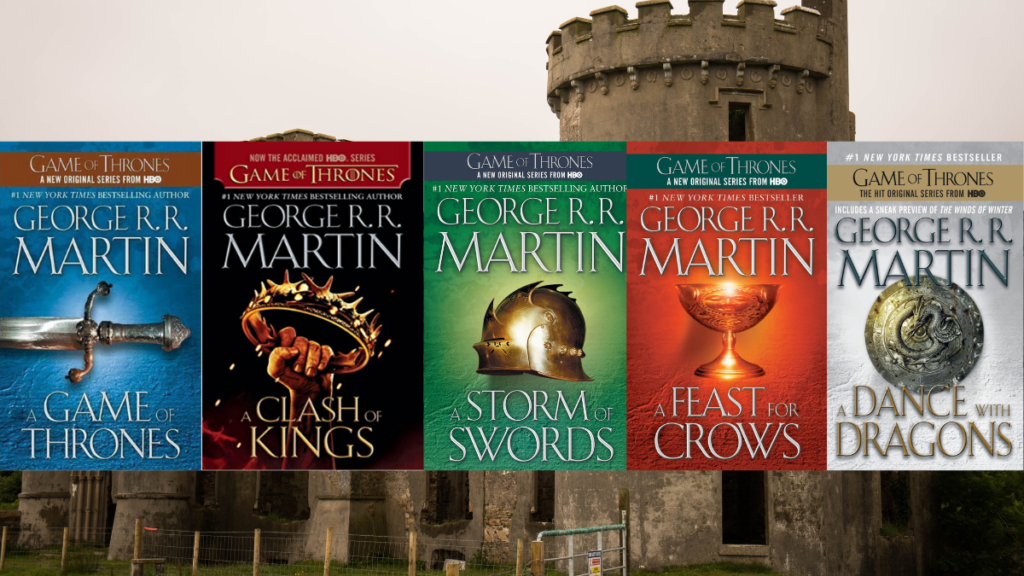
The “Game of Thrones” books, more formally known as “A Song of Ice and Fire” series, are written by George R.R. Martin. As of September 2021, here’s the order in which they should be read:
- A Game of Thrones (1996)
- A Clash of Kings (1998)
- A Storm of Swords (2000)
- A Feast for Crows (2005)
- A Dance with Dragons (2011)
Quick Fact: There are two more anticipated books in the series, titled “The Winds of Winter” and “A Dream of Spring.” Their release dates were still unannounced as of my last update.
In addition to the main series, there are also companion books and novellas set in the world of Westeros, such as “The Tales of Dunk and Egg” series and “The World of Ice & Fire.” These can be read alongside or after the main series based on your interest.
What should I read if I like Jacqueline Winspear?
If you’re fond of Jacqueline Winspear’s historical mysteries, especially the post-WWI era setting, you might enjoy the following authors and their respective series or novels:
- Charles Todd: Both the “Inspector Ian Rutledge” and “Bess Crawford” series offer mysteries set in the aftermath of World War I.
- Tessa Arlen: Her “Lady Montfort Mystery” series revolves around Edwardian England and delves into the social issues of the time wrapped around intriguing mysteries.
- Rhys Bowen: The “Molly Murphy” series and the “Royal Spyness” series by Bowen provide a blend of historical details with light-hearted and cozy mysteries.
- Susan Elia MacNeal: The “Maggie Hope” series follows a British spy during World War II, combining espionage, history, and mystery.
- Kerry Greenwood: The “Phryne Fisher” series, set in 1920s Melbourne, offers a delightful mix of mystery, history, and a strong female protagonist.
- Martin Walker: The “Bruno, Chief of Police” series, although set in contemporary times, offers a rich historical backdrop and mysteries set in the French countryside.
These recommendations are based on similar themes, historical settings, and narrative tones found in Jacqueline Winspear’s novels. Each offers its own unique flair and perspective on the respective eras they portray, making them appealing choices for fans of historical mysteries.
Why has the post-WWI era become a popular setting for mystery novels?
The post-WWI era offers a rich tapestry of societal change, personal traumas, and the pervasive shadow of a war that changed the very fabric of nations. The world was undergoing massive shifts in politics, technology, society, and culture.
The scars of war, both physical and psychological, were fresh, making it a fertile ground for narratives of loss, redemption, and mystery. Characters like those in Jacqueline Winspear’s books grapple with the personal aftermath of the war while navigating a rapidly evolving society.
This combination of personal and societal tension makes the era a captivating backdrop for mysteries.
How do historical mystery novels like those of Jacqueline Winspear differ from contemporary mysteries?
Historical mystery novels immerse the reader in a different time period, offering not just a puzzle to be solved but also a deep dive into the nuances, challenges, and atmospheres of bygone eras.
While contemporary mysteries engage with current societal issues, technologies, and forensic advancements, historical mysteries like Winspear’s rely on the protagonist’s intuition, period-relevant investigative methods, and a keen understanding of societal norms of the time.
The stakes in historical settings can feel both familiar and distinctly different, creating a layered reading experience.
Why are strong female protagonists like Maisie Dobbs significant in literature?
Strong female protagonists like Maisie Dobbs break the conventional molds and challenge societal expectations, especially when set in historical contexts. Characters like Maisie showcase resilience, intelligence, and independence in times when women’s roles were traditionally limited.
Quick Fact: By navigating traditionally male-dominated fields, such as detective work, they inspire readers and offer diverse perspectives on history. They not only drive the narrative but also provoke reflections on gender roles, societal expectations, and the evolution of women’s rights over time.
What role does trauma play in shaping the narratives of post-WWI mystery novels?
Trauma plays a pivotal role in post-WWI narratives, often serving as a silent character that influences actions, decisions, and interactions. The Great War was a devastating event, leaving millions dead, injured, or emotionally scarred.
Authors like Winspear delve into the psychological aftermath, exploring themes of grief, PTSD, survivor’s guilt, and the societal pressure to “move on.” This trauma, personal and collective, adds depth to characters, making their motivations and struggles more profound and relatable. In mysteries, it can serve as both a motive and an obstacle to resolution.
How do companion books and novellas, like those in the “Game of Thrones” series, enrich the primary series?
Companion books and novellas provide additional layers to the primary narrative, offering deeper insights into characters, settings, historical events, and cultures within the main series.
For instance, in the “Game of Thrones” series, while the main books focus on the primary events, companion materials can explore the backstory of a secondary character, delve deeper into the lore, or narrate events from a different perspective.
This additional material enriches the reader’s understanding and appreciation of the main series, filling in gaps and expanding the universe’s depth and breadth.
Crafting historical mystery novels requires a meticulous balance between accurate historical representation and creative narrative freedom. Authors must research extensively to ensure an accurate depiction of settings, societal norms, dialogue, and events. There’s the challenge of avoiding anachronisms and ensuring that characters’ beliefs and actions align with the era.
Simultaneously, they must weave a compelling mystery that feels organic to the period, which can be limiting given the absence of modern investigative tools and techniques. There’s also the challenge of making historical events and norms accessible and relatable to contemporary readers without compromising authenticity.
In what ways do the settings, be it the French countryside or 1920s Melbourne, contribute to the atmospheres of the mystery novels mentioned?
Settings play an instrumental role in creating the mood, tone, and atmosphere of a mystery novel. The French countryside, often depicted in literature as tranquil and idyllic, can juxtapose the dark undercurrents of a mystery, making the narrative more jarring and impactful.
On the other hand, 1920s Melbourne, with its urban sprawl, evolving societal norms, and a blend of cultures, offers a bustling backdrop where secrets can hide in plain sight, and societal changes can both aid and hinder investigations.
The setting not only provides the stage for the mystery but also influences the characters’ interactions, the unfolding of clues, and the overall pacing of the narrative.
Why is the era following major world events, like WWI, such fertile ground for novelists?
Post-major world events, societies undergo profound transformations. The aftermath of events like WWI not only reshaped borders and political structures but also deeply affected individuals on personal, psychological, and social levels. Novelists find this backdrop enticing because it’s rife with internal and external conflicts.
Such eras present opportunities to explore themes of change, loss, hope, disillusionment, and the redefinition of societal norms. Characters can be sketched out with complex layers, influenced by the turbulent times they’re living in, and stories can seamlessly interweave personal journeys with larger historical narratives.
How do the narrative techniques differ when writing historical fiction compared to contemporary fiction?
Historical fiction demands a delicate balance between historical accuracy and creative storytelling. The narrative techniques often involve weaving well-researched details of the past into the story to ensure authenticity. Authors might use archaic language, reference real historical figures, or incorporate actual events to root their story in the chosen era.
Conversely, contemporary fiction allows authors to draw from current events, technologies, and societal norms, offering immediate relatability to readers. The narrative can be more fluid, with the freedom to predict or comment on evolving trends without the stringent need for historical accuracy.
What makes a female detective, especially from a bygone era, a compelling protagonist?
A female detective from a bygone era is an archetype that defies societal expectations. In periods where women’s roles were traditionally restrictive, a female taking charge, exhibiting sharp intellect, and challenging the status quo becomes an emblem of resistance and progress.
Such characters, navigating a male-dominated world, bring a unique perspective to investigations, often using their societal-underestimated status to their advantage. Their journeys are not just about solving mysteries but also about breaking barriers, offering readers both a thrilling detective tale and a narrative of empowerment.
How does the backdrop of a city, whether it’s 1920s Melbourne or modern-day Paris, influence the tone and texture of a mystery novel?
Cities, with their unique histories, cultures, and vibes, deeply influence the narrative of a mystery novel. A city in the 1920s, like Melbourne, would carry the buzz of the Jazz Age, the rise of urban cultures, and the shadows of alleys echoing with secrets. Societal norms, fashion, and architecture all play roles in crafting the mystery.
Modern-day Paris, with its blend of history and contemporaneity, would offer a different palette, with mysteries potentially revolving around art heists, corporate espionage, or cultural clashes. The city becomes more than a setting; it’s a character that shapes the narrative’s mood, challenges, and resolutions.
Striking the right balance is crucial to maintain the authenticity of the era while keeping readers engaged with a compelling story. Too much adherence to fact can make the narrative dry, turning it into a history lesson rather than a novel. Conversely, too much fiction can alienate readers familiar with the era, breaking the suspension of disbelief.
By interweaving fact and fiction seamlessly, authors can create a believable world where real historical events and characters coexist with fictional ones, enhancing the overall reading experience.
How do side stories and novellas, like those associated with a larger series, offer fresh perspectives to the primary narrative?
Side stories and novellas act like spotlights, illuminating lesser-explored corners of the main narrative universe. They can delve deep into a secondary character’s backstory, explore events that run parallel to the main story, or even offer alternative points of view.
Quick Fact: These narratives can provide richer context, explain motivations that weren’t evident in the primary series, or simply offer a fresh tale in a familiar world. They enhance the main narrative by adding depth, nuance, and multiple layers of understanding.
How does the socio-political environment of an era shape the mysteries set in that period?
The socio-political environment of an era directly influences the kind of mysteries that arise. For instance, in a time of political upheaval, mysteries might revolve around espionage, rebellions, or political assassinations.
In contrast, an era marked by societal changes might see mysteries related to cultural clashes, changing gender roles, or the rise of new social classes. The rules of society, the available technologies, the prevalent biases, and the societal norms all contribute to crafting the puzzle at the heart of the mystery.
Conclusion
Delving deep into historical mysteries, whether set in post-WWI England or the vibrant streets of 1920s Melbourne, offers readers more than just a puzzle to solve. It’s a journey through time, an exploration of societal shifts, and a reflection on human nature across different eras.
While characters like Maisie Dobbs stand as beacons of resilience and intelligence, the cities and times they navigate become silent protagonists, shaping their tales. As we immerse ourselves in these intricately woven narratives, we not only engage with the mystery at hand but also with the rich tapestry of history that underpins it.
